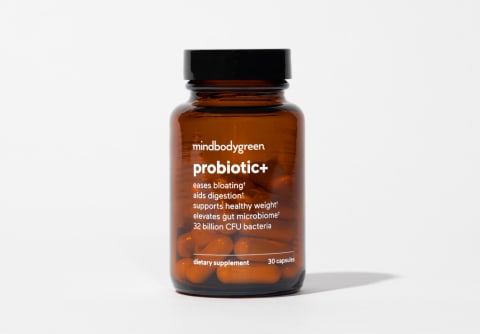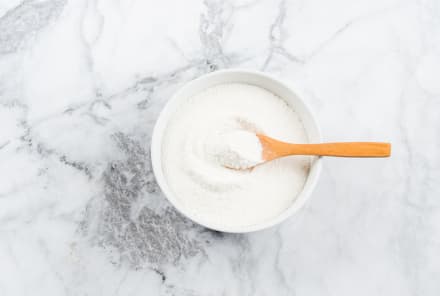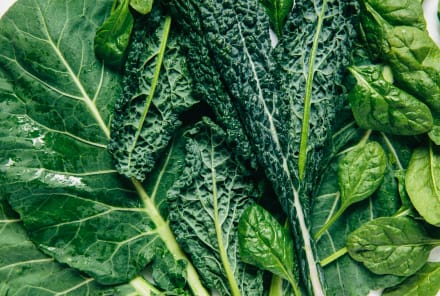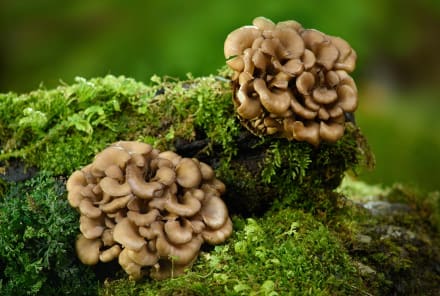Advertisement
To Kick-Start Good Gut Health, A Gastroenterologist Says You Need These 5 Foods


Of all the methods that can help nourish the gut microbiome, your diet can pull a ton of weight—specifically, your fiber intake. And a majority of people are simply missing the mark: "95% of Americans are fiber deficient, and they're not mildly fiber deficient—they are wildly fiber deficient," says gastroenterologist Will Bulsiewicz, M.D., MSCI, author of The Fiber-Fueled Cookbook, on this episode of the mindbodygreen podcast. If you increase your fiber consumption, chances are a healthy gut microbiome isn't too far behind.
Sounds easy enough. But where should you start? Here, Bulsiewicz lists the five foods you need to grab for a balanced gut:
Legumes & whole grains
"Legumes and whole grains are very packed with fiber, resistant starches, and polyphenols," says Bulsiewicz. (He's packaging them together in one bucket, as their effects on the gut microbiome wind up being quite similar.) Fiber, resistant starches, and polyphenols are the three main categories of prebiotics that feed the good bugs in your gut. Not to mention, that high fiber content will help slow down the absorption of your food and balance your blood sugar response after a meal.
Leafy greens
Next up, we have leafy greens. "Everyone needs to include leafy greens in their diet," Bulsiewicz declares.
"They have almost no calories and are so jam-packed with nutrition…how can we talk about nutrition and not include leafy greens in some capacity?" Many of these greens reside in the cruciferous vegetable family (kale, arugula, collard greens, etc.), which means they are full of fiber and keep gut bacteria thriving.
Research has even found that a protein in leafy greens stimulates the production of crucial immune cells called innate lymphoid cells (ILCs) in the gut, which is a prime example of how gut and immune health are intimately connected. "Choose the [greens] that you like, and switch it up," Bulsiewicz says, as each plant contains unique phytochemicals that work for specific microbes in your gut.
Sprouts
You heard it here first: "If you're not sprouting, you should be," says Bulsiewicz. Sprouts are chock-full of anti-inflammatory1, antioxidant2, and detoxifying qualities (example: Sprouted lentils have twice the antioxidant content3 as unsprouted), and it's a relatively inexpensive, accessible, and low-lift venture. "It's almost a miracle from nature," says Bulsiewicz. "It increases the fiber, it increases the protein, it increases the vitamins, and they will also take on these medicinal properties."
Broccoli sprouts, for example, contain higher amounts of the antioxidant sulforaphane than the mature broccoli plant. Sulforaphane is an incredibly gut-healthy antioxidant that has an ability to stabilize free radicals by activating the protein Nfr2, which, in turn, activates certain antioxidant genes in your body. One study even showed that sulforaphane from broccoli sprouts activated enzymes in the body that picked up pollutants from the bloodstream and flushed them out via urine.
"All you need is 1 square foot on your kitchen counter, and it requires no soil," Bulsiewicz says. "It takes about five minutes a day, and it is literally the freshest food on the planet because there is zero time lapse between when you harvest and when you consume—it's highly nutritious." Here's an easy, no-fuss guide to sprouting all of your beans and legumes.
Fermented foods
Bulsiewicz is a champion for a diverse, plant-heavy diet—but if there's one thing you should add to your plate, it's fermented foods. "If you quite simply start adding fermented foods to your diet, you can add a new dimension to your health, beyond just adding varieties of plants," he explains.
In fact, he references a 2021 study in the journal 4Cell4, which compared a diet that increased fiber versus a diet that added fermented foods. The researchers then measured a host of markers to discover how these two diets affected the inflammatory response (which can lead to bloating and suboptimal gut health as a result). The fermented food group had increased diversity in their microbiomes and a dramatic reduction in inflammatory markers, while the high-fiber group had mixed reviews, depending on the health of their gut microbiome. Essentially: If fiber makes you bloat, you might want to nurture your gut microbiome with fermented foods first. "This is another way we can amp up digestive health," Bulsiewicz says.
In terms of the best fermented foods to try, you have options: Bulsiewicz highlights sauerkraut, kimchi, sourdough bread, and kefir, and you can find a full list of staples here.
The takeaway.
Nurturing your gut microbiome can seem overwhelming at first, as there are tons of remedies to balance the bugs in your gut. That's why Bulsiewicz suggests starting with these five foods; with a few simple diet tweaks, you can jump-start your gut healing journey.
Watch Next
Enjoy some of our favorite clips from classes
Enjoy some of our favorite clips from classes
What Is Meditation?
Mindfulness/Spirituality | Light Watkins
Box Breathing
Mindfulness/Spirituality | Gwen Dittmar
What Breathwork Can Address
Mindfulness/Spirituality | Gwen Dittmar
The 8 Limbs of Yoga - What is Asana?
Yoga | Caley Alyssa
Two Standing Postures to Open Up Tight Hips
Yoga | Caley Alyssa
How Plants Can Optimize Athletic Performance
Nutrition | Rich Roll
What to Eat Before a Workout
Nutrition | Rich Roll
How Ayurveda Helps Us Navigate Modern Life
Nutrition | Sahara Rose
Messages About Love & Relationships
Love & Relationships | Esther Perel
Love Languages
Love & Relationships | Esther Perel
What Is Meditation?
Box Breathing
What Breathwork Can Address
The 8 Limbs of Yoga - What is Asana?
Two Standing Postures to Open Up Tight Hips
How Plants Can Optimize Athletic Performance
What to Eat Before a Workout
How Ayurveda Helps Us Navigate Modern Life
Messages About Love & Relationships
Love Languages
Advertisement

Want To Be Metabolically Healthy? New Study Shows An Underutilized Approach
Molly Knudsen, M.S., RDN

Bounce Back Quickly After Workouts With This DIY Electrolyte Drink
Molly Knudsen, M.S., RDN

Want To Be Metabolically Healthy? New Study Shows An Underutilized Approach
Molly Knudsen, M.S., RDN

Bounce Back Quickly After Workouts With This DIY Electrolyte Drink
Molly Knudsen, M.S., RDN














